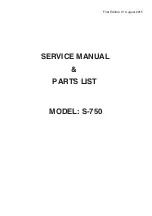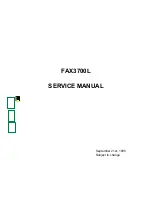Reviews:
No comments
Related manuals for DH4-B981

S750
Brand: Janome Pages: 41

Rotary 1202
Brand: White Pages: 44

B 60/10 C
Brand: Kärcher Pages: 55

5000L
Brand: Aficio Pages: 300

SSW 101
Brand: Sinbo Pages: 48

FAX3700l
Brand: Ricoh Pages: 256

FASTBACK 15
Brand: Powis Parker Pages: 36

6234XL
Brand: Janome Pages: 45

CL210A
Brand: Geemarc Pages: 84

6004
Brand: Gamma Pages: 20

1800S
Brand: MBM Pages: 47

275
Brand: Duerkopp Adler Pages: 36

FAX 940
Brand: Triumph Adler Pages: 110

908 7047 202
Brand: Nilfisk-Advance Pages: 44

8495
Brand: Coopers Pages: 12

236W120
Brand: Singer Pages: 20

ZJ8800A
Brand: ZOJE Pages: 43

ST88450
Brand: Sylvania Pages: 5

















